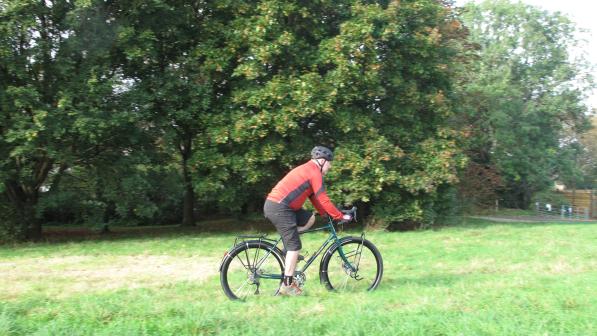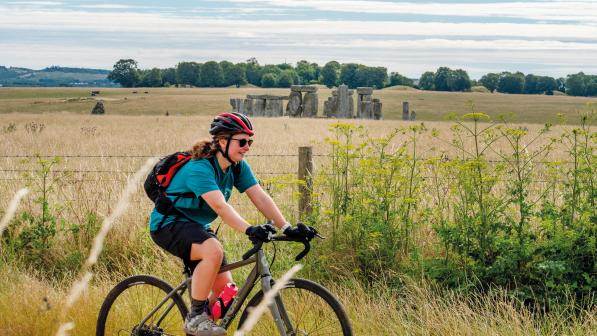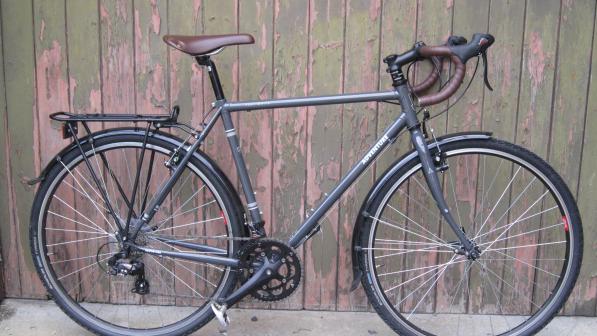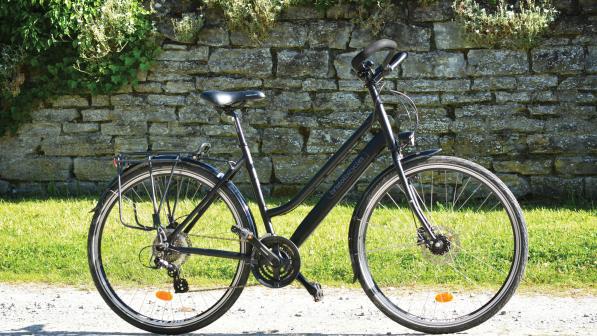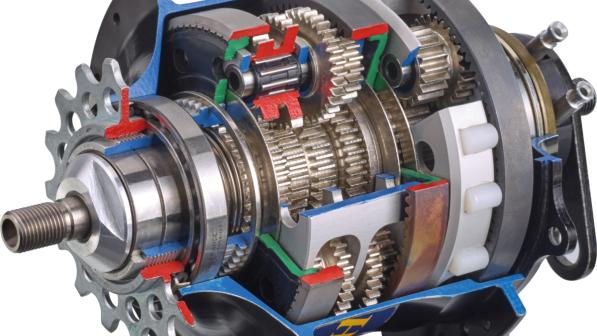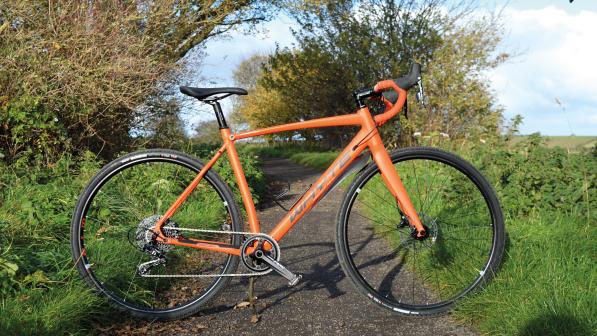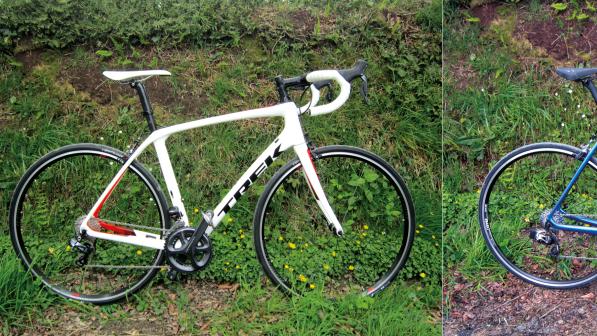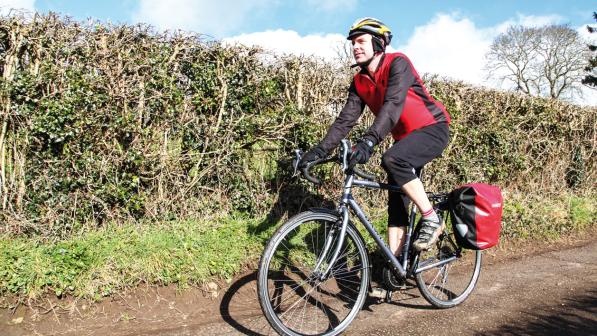Bike test: Mid-range tourers

Mid-range off-the-peg touring bikes are not what they used to be, if the two machines on test are reliable indicators. Weighing upwards of 14kg with pedals, these are substantial, hefty bicycles, clearly designed and built to prioritise strength and robustness over speed and comfort.
It may be that the growing popularity of gravel riding, bikepacking and other quasi off-road cycling activities such as ‘adventure’ touring, which place increased stress on the machine, has prompted manufacturers to beef up their offerings. Triple chainset and accessories aside, the Panorama could pass muster at one of the US-style gravel enduro races becoming popular in the UK.

Or it may simply be that the bikes are built to take whatever might be thrown at them and, if that means they are arguably overbuilt for faster, less heavily loaded touring duties, then so be it. Either way, it’s impossible to avoid the sheer mass of these machines and its impact on ride quality and rider effort – if that’s an issue for you when touring.
Move beyond weight, and the disc-versus-rim brake argument gets an outing on bikes where it ought to make a substantial difference. Otherwise, similarities between the two, of which there are many, simply point up what’s currently expected of an affordable, reliable, long distance tour-ready bicycle.
Frame & fork
Both bikes employ high-strength steel tubing for their frame and fork. Steel is the traditional material choice for touring framesets, not least because it is widely felt to offer a usefully resilient, springy ride that enhances rider comfort during long hours in the saddle.
As important on tour are the strength and long-term durability for which steel is famed, along with ease of repair using readily available, relatively simple technology, should the frame get damaged somewhere remote.
Expect the Galaxy and Ridgeback to score well on durability. The former is constructed using, according to the sticker, Reynolds 631 butted main tubes. Gauge, or wall thickness, is not specified but, judging by the ride and weight, is heavy even in the middle.
The respected 631 tubeset is used, according to the Dawes website, throughout the frame, with the fork built using Reynolds ‘R’ blades generously brazed into a cast steel crown with cromoly steerer. While the top tube is a regular (for today) 28.6mm, the down tube is an oversized 35mm and boasts a reinforcing gusset on the underside at the head tube. With bigger clearances, this would have made an impressive MTB frame back in the all-rigid days of the late 1980s…
These are substantial, hefty bicycles, built to prioritise strength and robustness over speed and comfort
Richard Hallett
The Galaxy’s crown adds a pleasing visual touch to what is otherwise a fairly industrial-looking affair, sturdily and, in places, untidily TIG-welded and finished off with a retro metallic green and silver paint job and slightly naff embossed head badge.
There are bosses for three bottle cages and, on the top of the left-hand chainstay, a spare spoke holder complete with two spokes. Fork bosses for a low-rider rack complete the specification.
If the Galaxy’s frameset is sturdy, that of the Panorama is brick-outhouse solid. Built using Reynolds 725 heat-treated cromoly, the neatly TIG-welded frame features oversized top and down tubes, at 32 and 35mm respectively, along with a reinforcing gusset under the down tube.
The unicrown fork, built for a disc brake, is massively rigid, while the disc calliper mount concedes nothing to delicacy of form. Oddly, there’s an extra threaded boss at the tip of each blade to go with the double-eyelet dropouts; perhaps the idea is to offer a choice of mounting points for a low-rider front rack.

At the back end, brutalist plate rear dropouts neatly brazed into the stays provide well-located mounting points for the rear rack, mudguard stays, the rear derailleur and, of course, the disc brake calliper. By locating the calliper inside the rear triangle, the Ridgeback neatly avoids a clash between brake and rear rack stays.
Small details include a pump peg behind the head tube, neatly arranged rack and mudguard bosses, and the seemingly obligatory stuck-on head badge. The only visual duff note is sounded by the rear brake cable’s route along the down tube, where the cable guide’s zip ties would look better replaced by dedicated clips.
Components
Shimano’s reliable Sora 9-speed groupset provides the bulk of the running gear on both bikes, from triple chainset to dual control levers. Arguments may rage over the advisability of running potentially fallible dual control levers on a long-distance machine, but the Panorama nevertheless runs the latest concealed-cable ST3030 levers, while the Dawes sticks with the external gear cables and gear indicators of the old model.
Both machines get a Shimano XT mountain bike rear mech to cope with the wide gear range.
Braking technology is where the significant differences between the two cycles are to be found. The Dawes wears traditional cantilever brakes, which, when well set up, provide as much power as most riders will need. The front brake on the Galaxy as delivered is not, and arguably cannot be, well set up.
The bike has cyclocross-style auxiliary brake levers under the handlebar tops; these dictate cable route, with the front brake cable forced to run to a headset-mounted cable hanger that would be too close even for a shortened cable. Decent performance could be obtained by either ditching the auxiliary levers or going for a fork crown-mounted ‘uphanger’, which would allow a suitable cable run. Rear brake performance is fine.

The Panorama does its braking using TRP Spyre cable-operated callipers biting 160mm Tektro discs. Their performance in this installation is feeble. Maybe it would improve after bedding in, but the worrying lack of initial bite is merely the prelude; acceptable deceleration (with no luggage) requires the grip of a wrestler.
Both discs rubbed lightly from the off, with the rear very much worse once the wheel had been replaced after I removed it to measure the rear dropout spacing.
On this basis alone, I’d choose the Galaxy and get the cantilever brakes working properly, although alternative disc callipers or more miles might give the Ridgeback decent braking performance.
Braking technology also affects wheel specification, with the Dawes running the traditional 36/36 spoke pattern on conventional rims and hubs, while the disc-braked Panorama gets appropriate hubs and rims along with 32 spokes front and rear.
Neither wheelset is light, nor do the wheels exhibit any trace of resilience. Double-butted spokes on the front wheel (it has them on the rear wheel’s non-drive side) would improve matters for the Galaxy. It’s doubtful that much could be done for the Ridgeback’s hoops, given the stresses of disc braking.
Wider (37mm) Schwalbe Marathon tyres soften the Panorama’s ride and give it slightly greater all-roads capability than the 32mm-tyred Galaxy.

Equipment
The mudguards and rear rack fitted to both bikes are standard fare on a touring cycle. The Dawes has well-proven Chromoplastic guards from SKS, which feature a release mechanism for the fork stays to prevent the mudguard folding up and jamming the front wheel, should the tyre pick up a stone or similar. Their wide profile, allied with excellent wrap, ensure both good protection from spray and plenty of mud clearance should the rider venture off metalled roads.
The Ridgeback’s Axiom RoadRunners lack the release fixture but otherwise offer similar protection.
A Tubus tubular steel model gives the Panorama a slight edge in the rear rack department over the Galaxy’s anonymous aluminium design, although for most purposes there will be no practical difference.
The Dawes is closer to the traditional idea of a tourer; the Ridgeback suits the more adventurous tourist
Richard Hallett
Verdict
The ride quality of both bikes can be summed up in one word: stolid. There’s a lot of material in both machines, most of it apparently concentrated in the frameset and wheels. More material, more rigidity, less deflection over bumps…
Vibration from the tread of its Schwalbe Marathon tyres can be felt through the handlebars of the Dawes, which also exhibits steering slightly prone to wander. It does have by far the better saddle in my opinion and, at 2lb lighter, is closer to the traditional idea of a touring bike.
The Ridgeback, on the other hand, feels almost unstoppable once underway, thanks to stable handling and its considerable inertia. With provisos regarding braking given due consideration, it would appear the better choice for the more adventurous tourist or aggressive all-roads rider.




